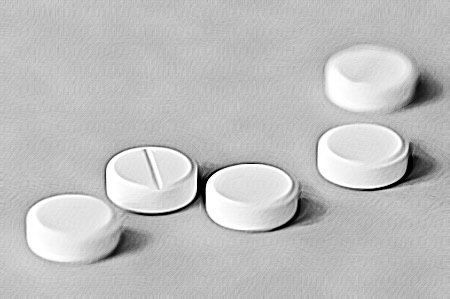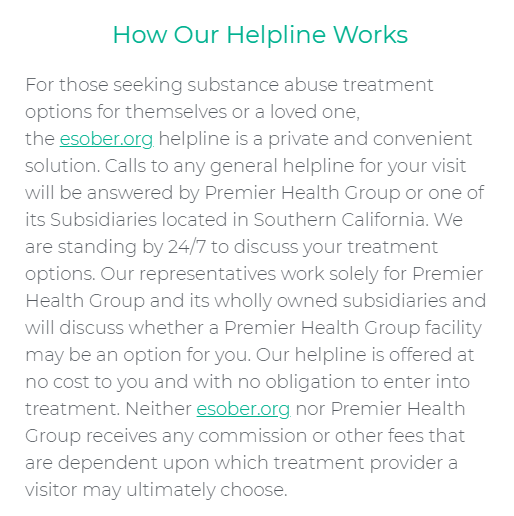The field of medicine has grown by leaps and bounds in the last hundred years. Doctors and experts are understanding more and more how the human body and mind work. This has led to landmark medications to treat nearly every body part and every illness. However, as with all things, many of these substances are dangerous and addictive if not handled with caution.
As with all things, make sure to educate yourself on any medication that has been prescribed to you. It is not just about observing uncomfortable side effects, it is about preventing serious issues from taking root. After all, it would benefit nobody if you treated a disease only to develop another disease—addiction—in its place.
Clonazepam
One drug that holds the potential for addiction is Clonazepam (also known as Klonopin), which falls under a classification of medicines called benzodiazepines. Doctors often prescribe this medicine to treat panic disorders. It can also control seizures and fits from epilepsy, involuntary muscle spasms, and restless leg syndrome.
As a substance that carries the risk of dependence, addiction, abuse, and overdose, Clonazepam is categorized as a Schedule IV substance. No pharmacy is permitted to distribute it without a prescription. If you have been prescribed this medication, be sure to follow the doctor’s instructions strictly to minimize the risk of dependence; if any unexpected effects occur, be sure to consult your doctor immediately.
The Risk of Overdose
While clonazepam fatalities are uncommon, they can still happen. Over 3–7.9 deaths per 1 million prescriptions of benzodiazepines happen every year. Abusers also tend to combine these drugs with other substances, like alcohol, which can exponentially increase the dangers.

If you or a loved one has been diagnosed with or has been abusing the drug, make sure to watch out for the signs of overdose. These may include but are not limited to the following:
- Drowsiness
- Confusion
- Depressed moods
- Impaired coordination
- Slow reflexes
- Slow (or stopped) breathing.
Some of the more serious side effects include:
- Loss of consciousness
- Suicidal thoughts
- Seizures (as part of withdrawal)
- Coma
- Death.
If at all possible, seek treatment for yourself or a loved one. There are plenty of addiction treatment centers equipped to deal with this addiction. Seek immediate medical attention if they are exhibiting any of the symptoms above.
How Addictions Forms
Clonazepam increases the production of activity of gamma-aminobutyric acid (GABA), a neurotransmitter that sends signals all over the body. A lack of GABA can over excite the system, causing panic attacks or seizures. GABA, however, is also responsible for feelings of relaxation, euphoria, and sedation—all of which can contribute to a possible dependence and eventual overdose.
The drug works very quickly, and should only be taken with the supervision of a doctor and alongside other psychiatric treatment. The drug itself cannot cure depression, anxiety, and other panic disorders; it can only stave off the symptoms. For the treatment to be truly effective, the root cause of every issue must be addressed.
Another of the muscles, which helps in patients who experience seizures, is that it relaxes the muscles and slows down brain activity. This can be incredibly useful for someone with epilepsy (especially if they experience particularly violent seizures).
Clonazepam and Alcohol Abuse
One substance that is commonly combined with clonazepam is alcohol. Both substances are immune system depressants. They hamper the transmission of electrical signals throughout the nervous system. This is the reason a person becomes uncoordinated, sluggish, and weak when inebriated.
Overconsumption of both can slow your heart rate, cause loss of consciousness, and result in severe memory loss. Combined together, they negate Clonazepam’s ability to prevent and reduce the intensity of seizures. In fact, they may even cause seizures. There is also an untold host of unpredictable effects on a person’s mental health.
The Uses of Clonazepam
We’ve mentioned before that Clonazepam can be used to treat panic disorders, but it can also relieve the symptoms of anxiety, depression, and other mental health conditions. Doctors normally prescribe a safe amount for these conditions—at 0.25 mg twice per day. Depending on the success of the treatment, your healthcare provider may add 0.125 mg to 0.25 mg every day. The maximum dosage, however, does not exceed 4 mg per day.
For people suffering from seizures, an adult’s dosage is about 0.5 mg three times per day. If this does not work, doctors may increase your dosage 0.5 mg to 1 mg until the seizures ease up. However, the dosage should never exceed 20 mg per day.
Relieving Anxiety and Improving Sleep
As we’ve mentioned before, the drug increases the production of GABA in the body. As it turns out, one of the common causes of anxiety is decreased GABA production. That makes Clonazepam a possible treatment for anxiety disorders.
Benzodiazepines are also used to treat insomnia. Though this has fallen out of practice, the drug is still occasionally recommended by doctors if nothing works. These drugs do not only increase the production of GABA, but they also bind to GABA-A. This promotes restful and easy sleep.
Clonazepam in the System
The drug has a half-life of 20–50 hours—which is far longer than your average drug. As such, it may show up in blood tests for several days. Urine tests may also test positive for five days after the last dose. The drug might take a while to reach the hair, but it can stay there for up to four months. In saliva, traces can remain for up to five days.

Another derivative of the drug, 7-aminoclonazepam, may be detected in urine for up to 14 days depending on the amount ingested. In saliva, it may remain for about six days.
More often than not, multiple tests at different intensities need to be taken. Unfortunately, the drug has a high risk of false negatives. Standard tests can only detect specific concentrations of this drug as it requires more stringent chemical examinations.
Dealing with People Addicted to Clonazepam
Drug addiction is terrifying. Certain people might be more susceptible as a result of a genetic predisposition or socioeconomic factors, but it can happen to anyone. Addiction is a complex condition that requires knowledge, understanding, patience, and dedication to tackle.
Not every person who becomes addicted to Clonazepam does so out of bad choices or negative influences; sometimes, it is a side effect of wanting to live a more comfortable life, free of seizures and panic disorders. As such, it is important to treat people who have become addicted to Clonazepam with care.
If they were taking Clonazepam for a specific illness, make sure to consult with an addiction specialist before taking them off the drug. They might end up with severe seizures once the detoxification process sits in.
People recovering from Clonazepam addiction also have an increased tendency to think suicidal thoughts. As such, it is important to note any changes in their behavior. It is essential that they also receive psychiatric treatment and therapy throughout the recovery process to ensure that they are emotionally and mentally capable of handling the process.
Final thoughts
Clonazepam is just one of many substances that are intended for healing and treatment but carry the potential for abuse. As such, it is important to work closely with your healthcare provider so that the potential side effects—addiction included—might be mitigated. Observe your condition carefully to determine whether or not you are developing a dependence on the drug.
Sources
https://medlineplus.gov/druginfo/meds/a682279.html
https://www.drugabuse.gov/drug-topics/opioids/benzodiazepines-opioids




